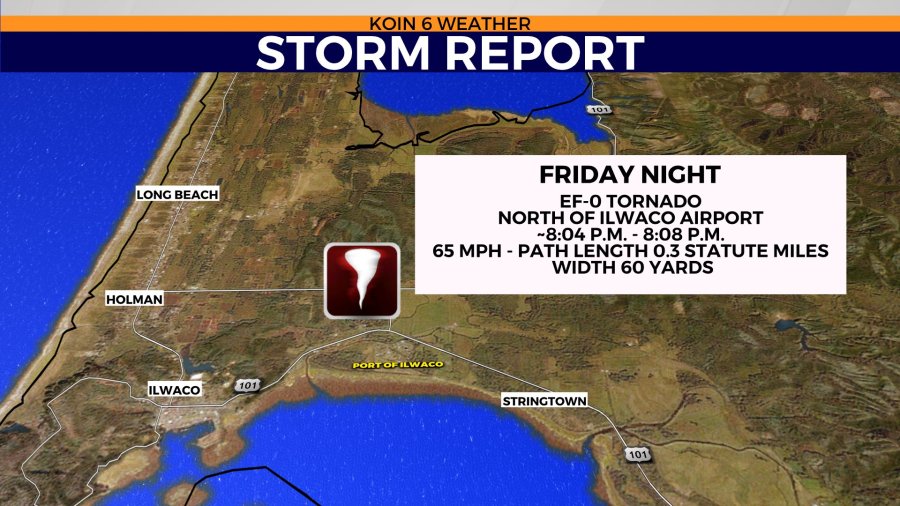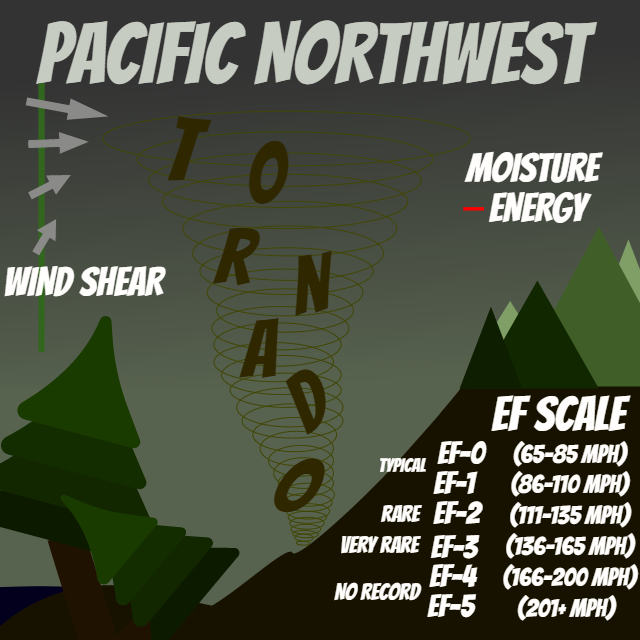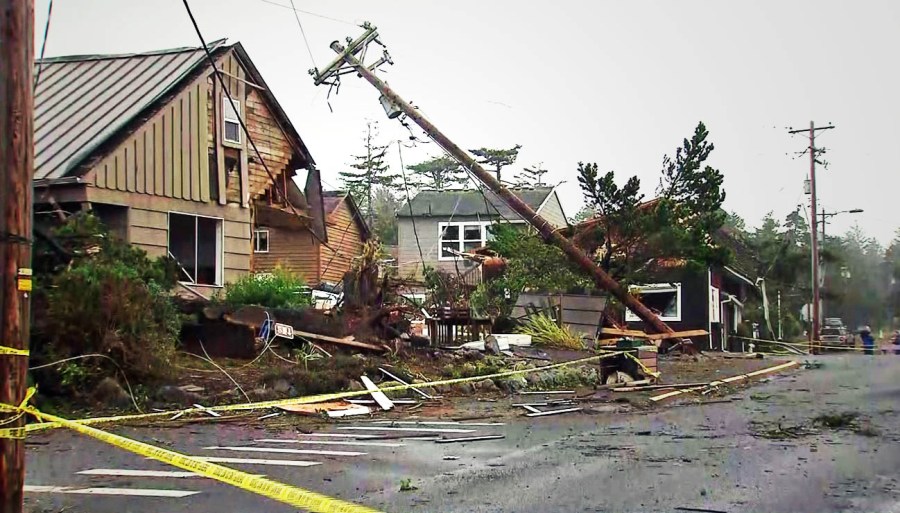PORTLAND, Ore. (KOIN) – A crack of thunder and a flash of lightning! A gusty strong wind blowing the wind chimes on the front porch! Spring is here and with the change in temperatures, we find ourselves entering a part of the season that may be a little more active when it comes to strong storms.
Sure the winter can bring in wind storms and heavy rain, the summer can bring dry lightning across the region, but the fall and spring are times of the year that can bring tornadoes around the Pacific Northwest (not strictly).
Just as we were going into our first day of spring, the National Weather Service in Portland, Oregon went out to survey the damage of a weak EF-0 tornado that occurred along the Washington coast. The tornado touched down at 8:04 p.m. and fell apart at 8:08 p.m. with top winds reaching 65 mph.

Before we can tackle the ingredients for a tornado here in the Pacific Northwest (PNW), why don’t we start by defining a tornado!
Tornado: A rotating column of air. It should be noted that it will be rapid and it extends from the cloud to the ground. If there is no contact with the ground, it is considered a funnel cloud.
Here is a video of a tornado in St. Helens, Oregon (November 10, 2020), courtesy of Dean Koecher.
You might be asking how often we see tornadoes in the PNW? Our average annual number of tornadoes is three. That is the case for both Washington and Oregon. Texas, which is more than twice the size of Oregon, averages 155 tornadoes a year. That has more to do with where Texas is located rather than its size.

WHAT ARE THE INGREDIENTS?


Tornadoes need energy (heat), moisture (high dewpoint) and wind (change/speed) to come together for one powerful unit. Of course, these can come in different magnitudes and in different forms. For example, for warm air to rise and clouds to build, that could come from a front or it may come from convection (warm air rising vertically). There are parts of the United States that find all these parameters coming together and at high levels. That is not the case for us.
Here is the deal:
Most of the tornadoes that we tend to have around here may happen because of that wind ingredient. Wind shear, or the change in the direction of the wind aloft can guide a storm into a tornadic cell. There are studies that suggest mountains and topography may actually help this shearing. However, MOUNTAINS can also mess up the direction of wind and create barriers. Our tornadoes are usually brief and weak. So, what are we missing? Here in the PNW, it is the moisture and the energy that we lack.

We have something over here that really inhibits our ability for some of these characteristics and that is the Pacific Ocean. This massive body of relatively cold water keeps our temperatures in check. Although we have this massive source of moisture to the west, we don’t find ourselves with deep tropical moisture either.
Because of all of that, a large number of the tornadoes that form in the PNW happen to classify as EF-0 tornadoes. The EF scale stands for the “Enhanced Fujita” scale. It is used to estimate the wind speed of a tornado and the related damage. If you look at the scale in the image above, you can see that our tornadoes tend to stay on the lower end of the scale. It is very rare for a tornado to reach the EF-3 range in the Pacific Northwest. On record, only three tornadoes have achieved F-3 status in Oregon and Washington combined. The strongest and deadliest tornado on record was rated F-3 (prior to the enhanced scale rating system) on April 5, 1972 in Vancouver, WA. We’ll get into how this tornado formed later in our tornado series.
In the spring season you get added heat from the higher angle in the afternoon and the cold air up above which together can create instability. In the summer we have a better chance for heat, but we lose the moisture. During the winter we may have the moisture, but lose the heat. It’s a give and take for this area, which is why our transition months can sometimes offer just the right ingredients for a stronger tornado.
Join us next week for Part 2 as we reveal some of the strongest tornadoes recorded in Oregon and Washington’s history.
